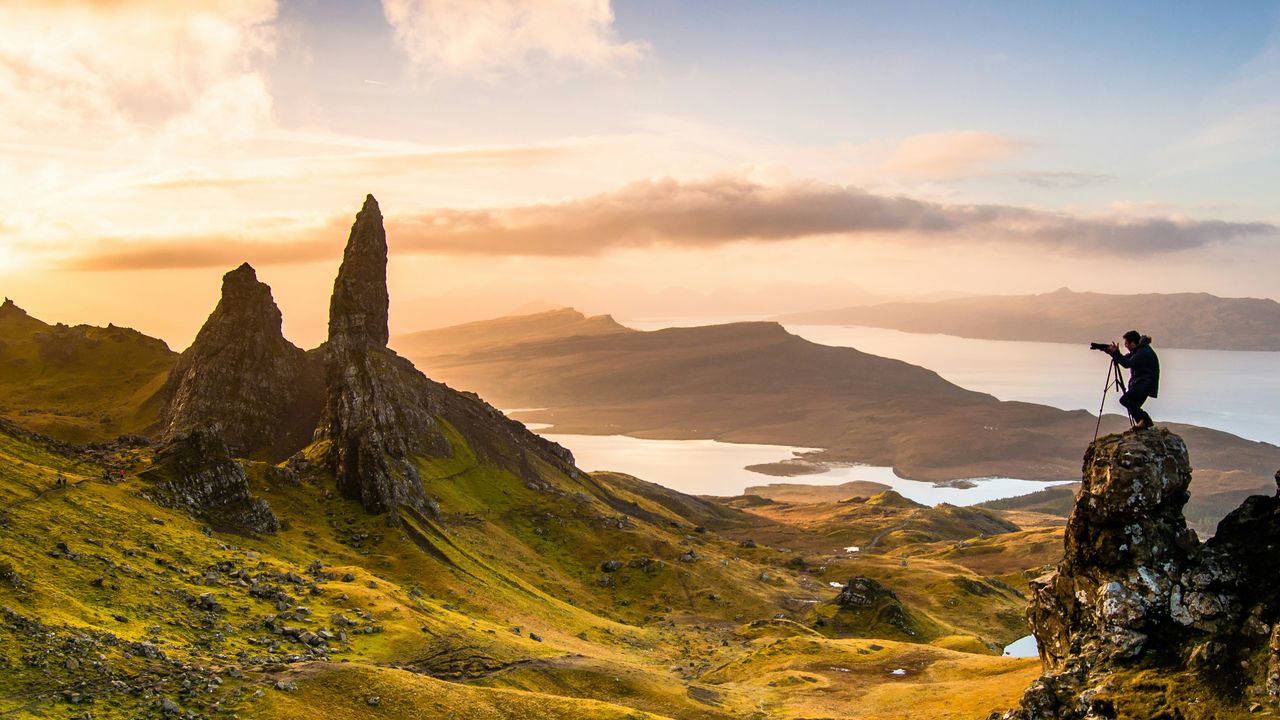
You arrive at your carefully scouted location an hour before sunset, camera gear ready, composition planned. The forecast promised clear skies. But as the sun approaches the horizon, a thick layer of clouds rolls in, turning what should have been a spectacular golden hour into flat, gray light. You pack up disappointed, having missed the magic hour you traveled hours to capture.
Every photographer has experienced this. Magic hour—that precious window of stunning light—is as unpredictable as it is beautiful. But it doesn’t have to be a gamble. Understanding how weather affects magic hour conditions transforms photography from hoping for luck to planning for success.
In this article:
Sonuby Weather eliminates the guesswork with comprehensive lighting forecasts that predict not just when magic hour occurs, but whether conditions will create spectacular light.
Free to download and use. All forecasting features included.
Magic hour refers to the period shortly after sunrise or before sunset when sunlight takes on a warm, diffused quality that’s ideal for photography. The term actually encompasses two distinct lighting periods: golden hour and blue hour.
Golden hour occurs twice daily—during the hour after sunrise and during the hour before sunset. During golden hour, the sun sits low on the horizon, typically between the horizon and about 6° above it. This low angle causes sunlight to travel through more atmosphere, scattering shorter blue wavelengths and allowing warm oranges, reds, and yellows to dominate. The light becomes soft, directional, and flattering.
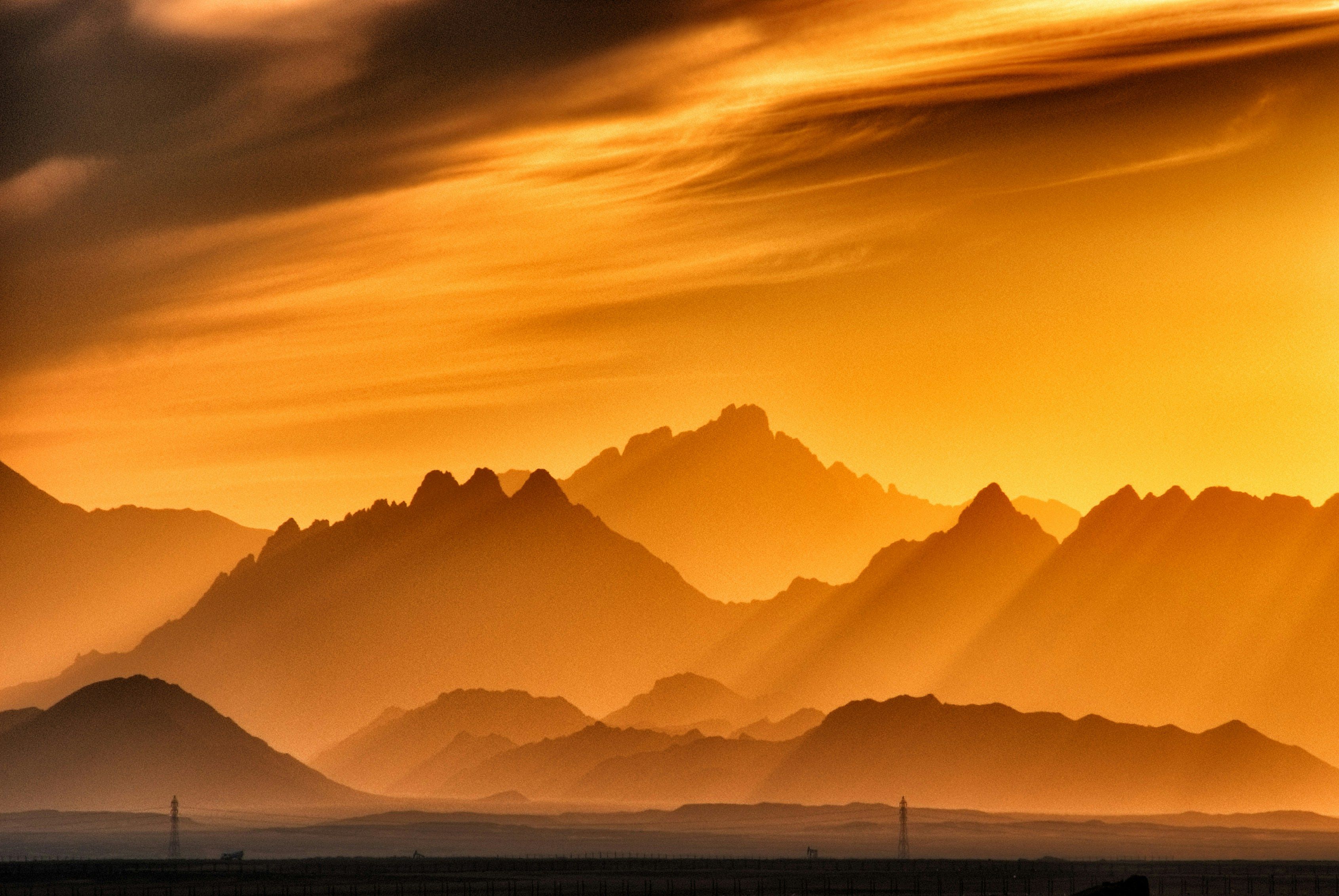
The warm orange glow happens because sunlight travels through much more atmosphere near the horizon, scattering away cooler blue tones. Photo by Sergey Pesterev
Blue hour happens when the sun is between 4° and 8° below the horizon, occurring just before sunrise and just after sunset. While no direct sunlight reaches the subject, indirect light scattered by the atmosphere creates a cool, even blue tone. This ethereal quality makes blue hour perfect for cityscapes, twilight portraits, and long exposures.
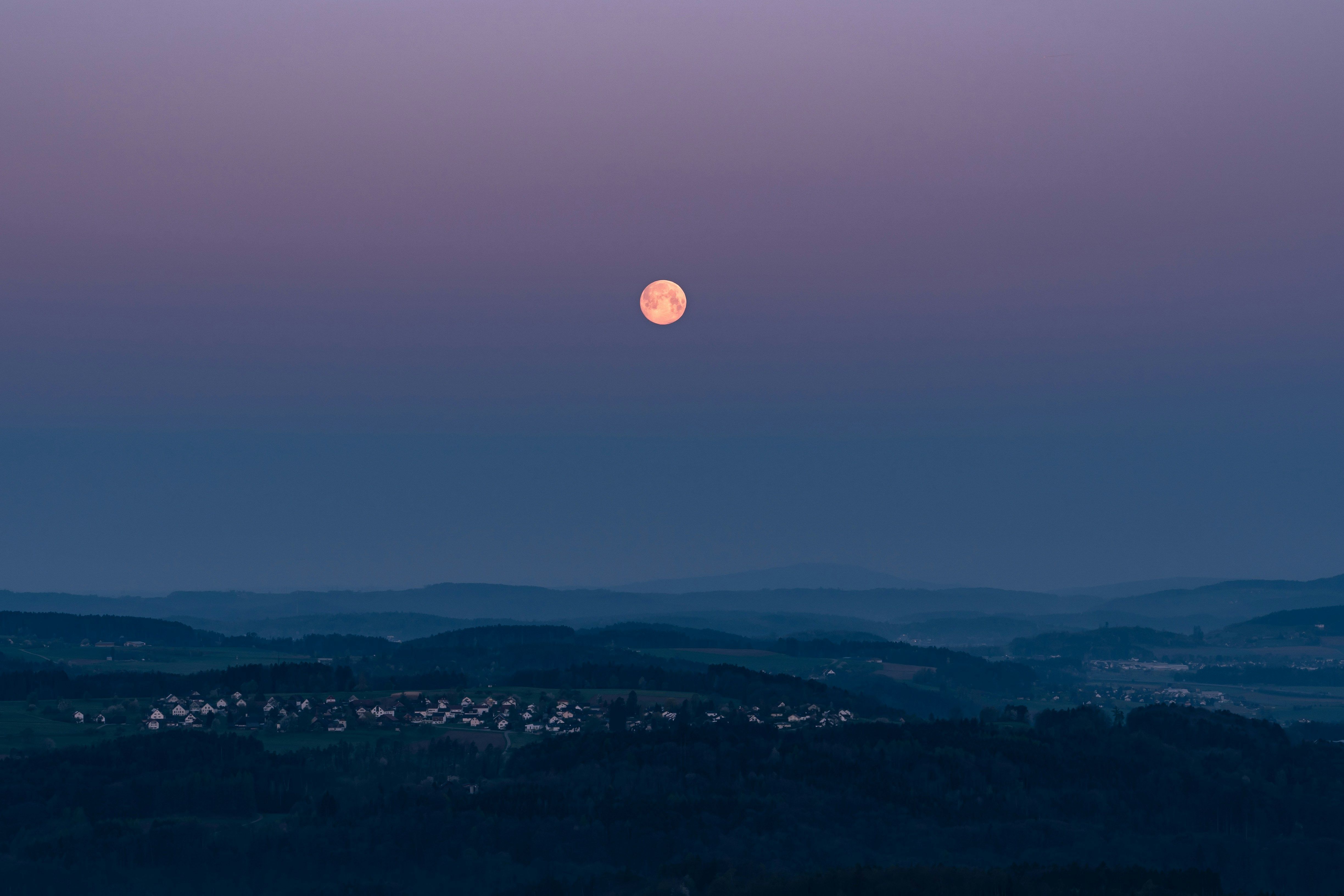
Blue hour’s soft, even lighting comes from indirect skylight after the sun drops below the horizon. Photo by Pascal Debrunner
Photographers treasure magic hour for several reasons. The warm color temperature during golden hour (around 3,500K) creates emotional, inviting images impossible to replicate with midday light. Long shadows add depth and dimension to compositions. The sun’s low angle provides natural side lighting and backlighting opportunities. And perhaps most importantly, the dynamic range during magic hour is manageable—unlike harsh midday sun, your camera can capture detail in both highlights and shadows.
Understanding why magic hour looks the way it does helps you predict and maximize photographic opportunities. The quality of magic hour light results from sunlight’s journey through Earth’s atmosphere at extreme angles.
When the sun sits near the horizon, its light must travel through approximately 38 times more atmosphere than when it’s directly overhead—the longest possible path through Earth’s atmosphere before sunset.
When the sun sits near the horizon, this extended path causes Rayleigh scattering—the phenomenon that makes the sky blue during the day. Shorter wavelengths (blue and violet) scatter more easily than longer wavelengths (red and orange). During magic hour, shorter wavelengths scatter away before reaching your camera, leaving warm tones to illuminate your scene.
But magic hour isn’t just about sun angle. Weather conditions dramatically affect light quality, which is why two golden hours can look completely different. Atmospheric particulates—water droplets, aerosols, dust, and pollution—act as additional scattering agents. Light humidity or distant haze can enhance colors, creating those vibrant sunset photographs. Too much, however, and you get flat, murky light.
Temperature inversions, common during magic hour, trap particulates near the ground. On clear days, this can create spectacular gradients from warm horizons to cool overhead skies. After rainstorms, cleaner air produces sharper, more saturated colors as reduced particulates allow more direct light to reach your sensor.
The color temperature shift during magic hour follows a predictable pattern. An hour before sunset, light measures around 4,500K—noticeably warmer than midday’s 5,500K but still relatively neutral. As golden hour begins with the sun at 6° above the horizon, color temperature sits around 4,000-4,500K. As the sun drops closer to the horizon, color temperature continues to plummet, reaching 2,500-3,500K at its lowest, painting everything in rich golds and oranges. After sunset, during blue hour, color temperature rises again to 8,000-12,000K as indirect skylight dominates.
This scientific understanding reveals an important truth: predicting magic hour quality requires weather forecasting. Knowing when the sun sets isn’t enough. You need to know cloud cover, visibility, humidity, and atmospheric conditions.
Precise timing separates spectacular magic hour photographs from missed opportunities. Unlike midday photography where timing flexibility exists, magic hour demands you be in position at exactly the right moment with equipment ready.
The duration and intensity of magic hour varies significantly with latitude and season. Near the equator, the sun drops quickly below the horizon, creating brief but intense golden hour lasting 30-40 minutes. At higher latitudes like Iceland or Norway, the sun’s oblique path extends golden hour to 90 minutes or more during summer, with gentle, gradual transitions between lighting phases.
At extreme latitudes near the Arctic Circle during summer solstice, the sun never fully sets. Golden hour can last for hours as the sun circles the horizon, creating extended opportunities for magic hour photography.
Seasonal variations affect more than just duration. During summer at mid-latitudes (like the United States or Europe), golden hour begins around 7:00 PM and can extend past 8:30 PM. Winter golden hour might start at 4:00 PM and end by 5:00 PM. These shifts affect not just when you shoot, but what you can photograph—different subjects work better with different golden hour durations and intensities.
Pre-visualization is critical. Arrive at your location at least 45-60 minutes before optimal magic hour begins. This allows time to scout compositions, set up tripods, adjust settings, and test exposures. The best light often appears briefly and unexpectedly. If you’re still fumbling with your camera bag when the sky erupts in color, you’ve missed it.
Many photographers make the mistake of leaving once the sun disappears. The most spectacular colors frequently appear 10-20 minutes after sunset, when clouds catch the last rays of sunlight from below the horizon. Similarly, arriving only for sunrise misses the pre-dawn blue hour that can produce equally stunning images.
The sun’s azimuth (compass direction) determines where light comes from, affecting shadows, backlighting, and how it illuminates your subject. A sunset facing west creates completely different opportunities than one facing south. Planning tools that show sun position help you align compositions with light direction.
For photographers, this means you need more than just sunset times. You need sun elevation angles, azimuth data, and the ability to plan days or weeks in advance—especially when traveling to special locations.
Not all magic hours are created equal. Weather conditions determine whether you’ll capture spectacular photographs or flat, uninspiring images. Understanding these impacts helps you choose when to shoot and when to wait for better conditions.
Cloud cover is the single most important weather factor for magic hour photography, but the relationship is nuanced. Zero clouds can produce disappointing magic hours. The sun simply drops below the horizon with minimal color. However, 20-50% cloud cover—particularly scattered or broken clouds—creates the conditions for spectacular sunsets. Clouds act as canvases for sunlight, reflecting and diffusing warm tones across the sky.
The type of clouds matters enormously. High-altitude cirrus clouds (above 20,000 feet) are magic hour’s best friend. These wispy ice crystal formations catch sunlight even after the sun drops below your horizon, creating vibrant reds and oranges that can last 30 minutes past sunset. They add texture and interest without blocking light.
Mid-level altocumulus clouds can create dramatic patterns, especially when scattered. These are the classic “cotton ball” clouds that turn brilliant orange and pink during magic hour.
Low-level stratus clouds, however, typically ruin magic hour. These thick, gray cloud decks block sunlight completely, producing flat, colorless conditions. A solid overcast sky means no magic hour photography.

Scattered clouds like these catch and reflect golden light without blocking it—creating vibrant color across the sky. Photo by Andrew Wulf
Visibility and atmospheric clarity determine color saturation and contrast. Meteorologists measure visibility as the distance at which objects become indistinct. For photographers, visibility above 10 miles (16 km) generally produces sharp, saturated magic hour colors. Visibility of 6-10 miles still works but with reduced vibrancy. Below 6 miles, haze begins degrading image quality significantly.
Interestingly, slightly reduced visibility can enhance certain magic hour conditions. A thin layer of humidity or distant smoke can intensify warm tones, creating those deep, saturated sunsets. The key word is “thin”—too much becomes problematic.
Post-storm conditions offer some of the most spectacular magic hour photography. After rain systems pass through, the atmosphere is cleaner with fewer particulates. Remaining clouds create dramatic formations, and the contrast between clearing skies and lingering clouds produces dynamic compositions. If you can position yourself so the storm is moving away from your sunset direction, you might capture clearing skies illuminating rain shafts—a photographer’s dream scenario.
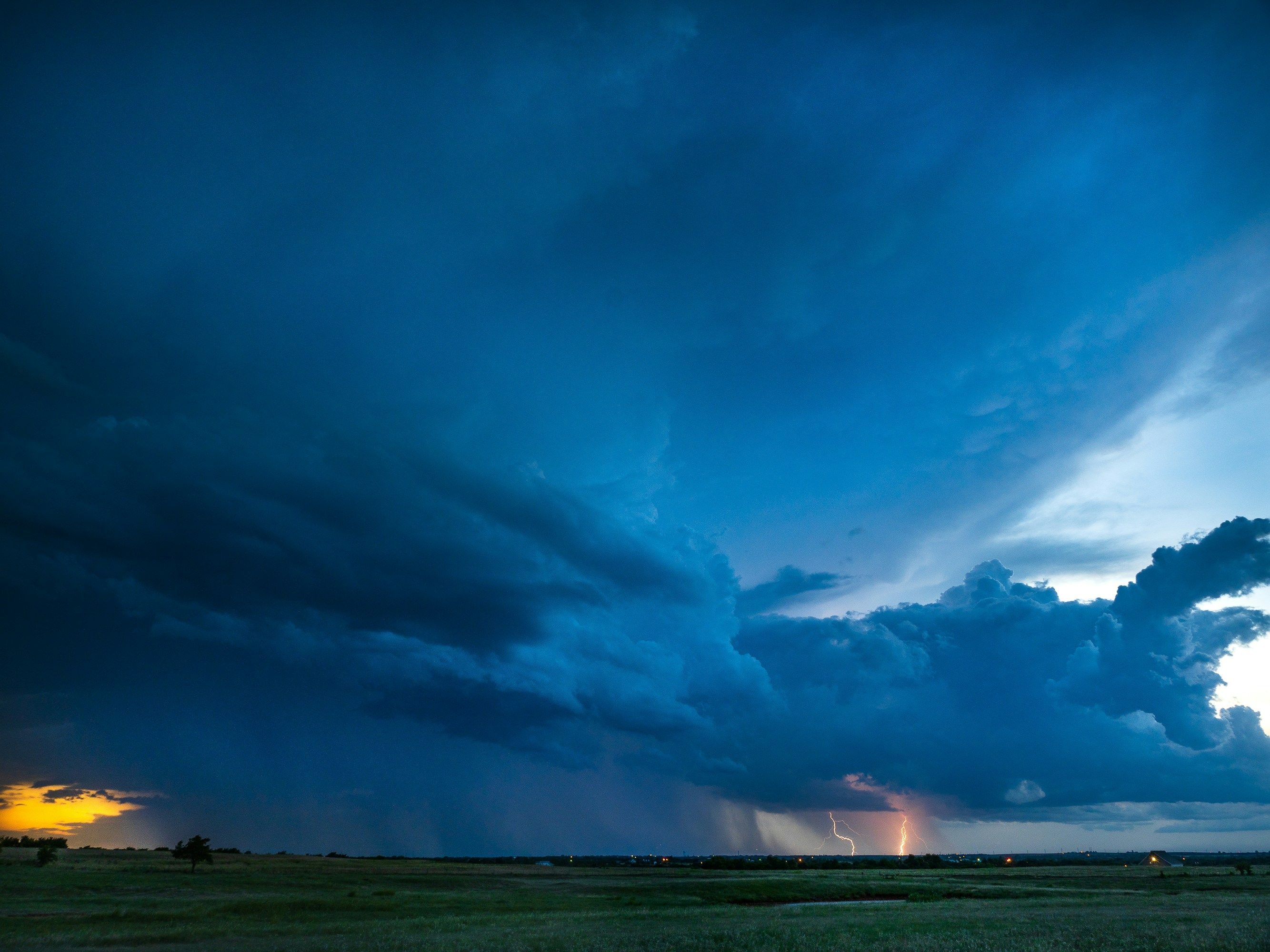
After storms pass, cleaner air and dramatic cloud formations create ideal conditions for spectacular magic hour photography. Photo by Raychel Sanner
Humidity affects color in subtle ways. Moderate humidity (40-70%) can enhance warm tones without degrading sharpness. Very high humidity (above 80%) tends to create haze that softens and desaturates images. Very low humidity (below 30%), common in deserts, produces intensely sharp images with saturated colors but sometimes lacks the atmospheric glow that makes magic hour special.
The practical implication is clear: successful magic hour photography requires weather forecasting. You need to know not just when golden hour occurs, but what the cloud cover percentage will be, cloud types, visibility levels, and whether conditions will create spectacular or mediocre light.
Choosing the right location for magic hour photography involves more than just finding scenic views. The sun’s position, geographic features, and weather patterns all interact to create or destroy photographic opportunities.
During golden hour, you need to know the sun’s azimuth (compass direction) and elevation to plan compositions effectively. For example, if you’re photographing a mountain landscape and want the peaks illuminated by golden light, you need the sun positioned so its light strikes the mountains directly. This requires knowing not just sunset time, but where the sun will be in the sky throughout golden hour.
Azimuth varies significantly throughout the year. In summer at mid-northern latitudes, the sun may set at azimuth 300° (west-northwest), while in winter it might set at 240° (west-southwest). This 60° shift means locations that work beautifully in summer might not work at all in winter, and vice versa. Planning tools that show sun paths help identify which locations will have optimal lighting on specific dates.
Elevation matters too. When shooting from high elevation, golden hour begins earlier and lasts longer because you can see farther over the horizon. Conversely, valleys or locations with mountains to the west lose direct sunlight before official sunset, shortening golden hour.
Having a backup location strategy is essential for magic hour photography. Weather is unpredictable, and even good forecasts sometimes miss localized cloud formations. Successful photographers scout multiple locations facing different directions. If your primary west-facing sunset location develops cloud cover, you can pivot to an east-facing location where clouds might catch the last light beautifully.
Weather maps reveal opportunities that simple forecasts miss. Cloud cover isn’t uniform—it varies by location. A weather map might show your home location under 80% cloud cover but a spot 20 miles away under 40% clouds. This is especially true near coastlines, mountains, or large water bodies where geography influences local weather. Having detailed cloud cover maps helps you find clear skies when your immediate area is cloudy.
For urban photography, sun position planning becomes even more critical. Photographing a specific building or street illuminated by golden hour light requires precise knowledge of sun azimuth. Many urban photographers use sun position apps to identify exactly which days and times the sun aligns with their desired composition.
The combination of sun position, elevation, azimuth, and weather forecasts turns magic hour photography from guesswork into strategic planning. Instead of hoping for good conditions, you can actively seek them out.
Magic hour photography requires different techniques than shooting in other lighting conditions. Understanding exposure, white balance, and compositional approaches helps you capture the stunning light quality that makes this time so special.
Exposure considerations: Golden hour’s lower light levels mean you’ll typically shoot between ISO 200-800, wider apertures like f/2.8-5.6, and shutter speeds of 1/125-1/500 second for handheld work. These are starting points that will vary based on your specific conditions, subject, and creative goals. The constantly changing light means you need to check exposure frequently. What worked perfectly five minutes ago may be a stop underexposed now.
Many photographers underexpose golden hour images by a third to half a stop, preserving highlight detail in bright skies while keeping rich, saturated colors. Modern cameras’ dynamic range allows recovering shadow detail in post-processing, but blown highlights are unrecoverable.
Bracketing becomes especially valuable during magic hour. The dynamic range between bright skies and shadowed foregrounds often exceeds even modern sensors. Taking three or five bracketed exposures allows HDR merging or selective blending in post-processing. Most cameras offer automatic exposure bracketing—a feature worth using during magic hour’s brief optimal window.
White balance choices: Auto white balance often tries to neutralize golden hour’s warm tones, defeating the purpose. Setting white balance to “Daylight” or “Sunny” (typically 5,200-5,500K) preserves the warm color cast that makes golden hour special. Some photographers even set white balance slightly cooler to intensify golden tones.
During blue hour, the opposite applies. Setting white balance to “Shade” (7,000-8,000K) or even “Cloudy” (6,000-6,500K) counteracts excessive blue casts, creating more neutral tones while preserving the ethereal blue hour quality.
Golden hour offers warm, directional light perfect for:
Blue hour’s cool, even light excels at:
Compositional considerations: Golden hour’s long shadows become compositional elements themselves. Position yourself so shadows lead toward subjects, create patterns, or add depth. The low sun angle creates opportunities for dramatic silhouettes—position subjects between your camera and the sun, expose for the bright sky, and let subjects go dark for striking contrast.
During blue hour, the even lighting allows compositions that would be impossible during day or golden hour. City lights at the same brightness as the sky create balance between natural and artificial light sources. Water reflects blue hour’s colors beautifully, making lakes, rivers, and oceans valuable compositional elements.
Timing your shutter within magic hour matters. The first 20 minutes of golden hour often provides the best light quality for subjects—warm but not overly orange, with enough light level for handheld shooting. The last 10 minutes produce the most dramatic skies but may be too dark for non-sky subjects. Plan your shooting sequence accordingly.

The low sun angle creates long shadows that add depth and texture to landscape compositions. Photo by Bernd Dittrich
With so many variables affecting magic hour photography success—sun timing, azimuth, elevation, cloud cover, visibility, and weather patterns—planning can feel overwhelming. This is where Sonuby Weather transforms magic hour photography from guesswork into strategic planning.
Most weather apps tell you when the sun sets. That’s helpful but insufficient. The question isn’t just “when does the sun set?” but “will conditions create spectacular light?” Sonuby Weather’s Photography Report provides exactly this comprehensive forecast. Trusted by photographers worldwide for planning everything from weekend golden hour sessions to professional landscape shoots.
The best part? You don’t need to be a meteorologist to use it. Sonuby presents all this complex weather data in photographer-friendly formats—simple percentages, visual charts, and color-coded maps that make planning intuitive.
14-day sun position forecasts show precise timing for golden hour and blue hour up to two weeks in advance. More importantly, these forecasts include sun elevation and azimuth for any time of day. Planning a landscape shoot next weekend? You can see exactly where the sun will be in the sky at 7:15 PM, helping you choose locations where the sun’s angle illuminates your subject perfectly.
Cloud cover predictions distinguish between useless information and actionable intelligence. Instead of vague “partly cloudy” descriptions, you get specific percentage forecasts: 30% clouds at sunset, 60% clouds an hour later. This helps predict whether you’ll have the scattered clouds that create dramatic color or the clear skies that might disappoint.
Even better, cloud cover forecasts break down by altitude. You can see if those clouds are high cirrus formations that enhance magic hour (ideal) or low stratus clouds that ruin it (avoid). This level of detail transforms decision-making.

Track precise golden hour and blue hour timing with 14-day sun position forecasts showing elevation and azimuth for perfect composition planning.
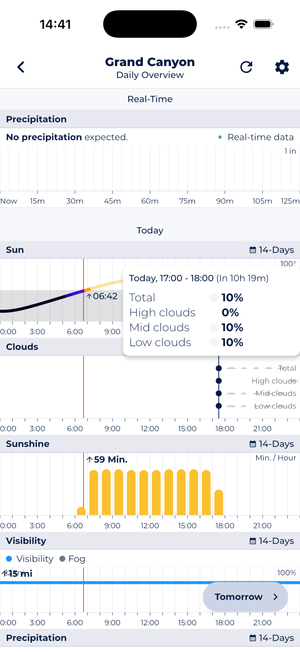
Predict magic hour quality with detailed cloud cover forecasts showing percentage breakdown by altitude to identify ideal high cirrus versus problematic low stratus clouds.
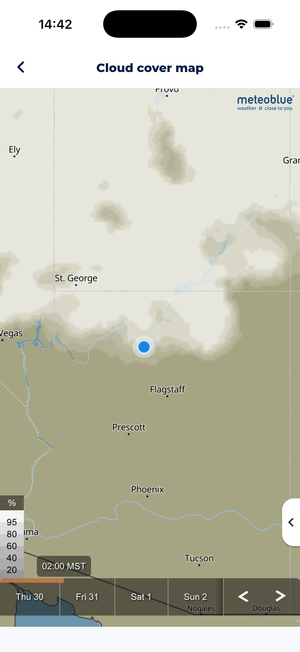
Use interactive weather maps to discover nearby locations with better cloud conditions when your primary spot has unfavorable coverage.
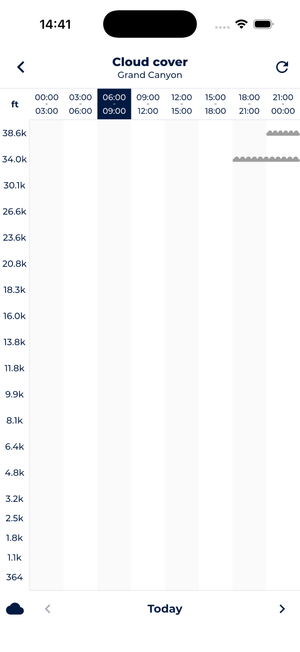
View detailed cloud altitude distributions to distinguish between high cirrus clouds that enhance golden hour colors and low stratus clouds that block light.
Interactive weather maps solve the localized weather challenge. Your home location might show 80% cloud cover, but Sonuby’s weather maps for cloud cover, sunshine, and visibility might reveal a spot 15 miles away with 40% clouds and excellent clarity—perfect conditions.
Visibility forecasts help predict atmospheric clarity. Planning a magic hour shoot of distant mountains? Visibility forecasts tell you whether haze will soften your images or if conditions will be sharp and clear. This is especially valuable in areas prone to humidity, pollution, or seasonal haze.
Location comparison becomes powerful when you’ve scouted multiple potential shooting locations. Save your favorite spots—perhaps a mountain overlook, a beach location, and an urban skyline—then compare forecasts across all of them. When one location develops poor conditions, you have alternatives ready with detailed forecasts for each.

Monitor atmospheric clarity with visibility forecasts that predict whether you’ll capture sharp, saturated colors or hazy, soft images during magic hour.

Compare conditions across saved locations to find the best magic hour opportunities when your primary shooting spot has unfavorable weather.
Sonuby’s customization features matter for photographers. Not everyone cares about precipitation during golden hour, but visibility, cloud cover, and sun position are critical. You can configure your forecast to prioritize the variables that affect your photography, hiding less relevant information.
For photographers who track multiple locations—perhaps regular shooting spots or planned travel destinations—Sonuby’s location collections organize everything. Create a “Magic Hour Spots” collection, add all your scouted locations, and check forecasts across all of them before deciding where to shoot.
Everyone’s photography needs are unique. Wedding photographers shooting magic hour portraits care more about consistent light than dramatic skies. Landscape photographers chase the dramatic clouds and colors. Sonuby’s flexibility accommodates both approaches with customizable forecasts that surface the information you need.
The app is available globally on both iOS and Android. All weather forecasting features are included in the free version—premium upgrade available for ad-free experience and advanced forecast customization.
Magic hour timing varies by location and season. Golden hour typically occurs during the hour after sunrise and the hour before sunset. Blue hour happens when the sun is 4-8° below the horizon, lasting 20-40 minutes before sunrise and after sunset. At the equator, magic hour is brief (30-40 minutes), while at high latitudes during summer, it can extend beyond 90 minutes. Precise timing requires calculating sun elevation for your specific location and date.
Magic hour duration depends on latitude and season. Near the equator, golden hour lasts about 30-40 minutes year-round due to the sun's steep descent. At mid-latitudes (like the US and Europe), golden hour typically lasts 45-60 minutes in winter and 60-90 minutes in summer. At very high latitudes (Iceland, northern Scandinavia), summer golden hour can extend several hours as the sun skims the horizon. Blue hour is generally shorter, lasting 20-40 minutes regardless of latitude.
Magic hour is the umbrella term encompassing both golden hour and blue hour. Golden hour refers specifically to the warm, golden-toned light when the sun is near the horizon (within about an hour of sunrise or sunset). Blue hour occurs when the sun is below the horizon (4-8° below), creating cool, blue-toned light. Some photographers use "magic hour" and "golden hour" interchangeably, but technically magic hour includes both lighting periods around sunrise and sunset.
Scattered or broken clouds at 20-50% coverage create the best magic hour conditions. High-altitude cirrus clouds are ideal—they catch sunlight even after sunset, creating vibrant colors without blocking light. Mid-level altocumulus clouds add dramatic patterns. Avoid thick stratus clouds or solid overcast, which block sunlight and create flat, gray conditions. No clouds at all can produce disappointing magic hours with minimal color. The sweet spot is partial cloud cover that acts as a canvas for golden and pink tones.
It depends on the type of bad weather. Overcast skies with thick cloud cover eliminate magic hour light entirely. However, clearing storms can create spectacular conditions—clean air after rain produces saturated colors, and retreating storm clouds make dramatic skies. Light rain or mist can add atmosphere to blue hour photography. Fog transforms magic hour into something ethereal. The key is understanding which weather conditions enhance versus destroy magic hour light quality.
Sun position planning requires knowing both azimuth (compass direction) and elevation (angle above horizon). Weather apps with sun position charts show exactly where the sun will be at any time. For photography planning, you need to know the sun's azimuth during golden hour to ensure it illuminates your subject from the desired angle. Sun position varies significantly throughout the year, with the sunset azimuth shifting up to 60° between summer and winter at mid-latitudes.
Golden hour: ISO 200-800, aperture f/2.8-5.6 for landscapes (wider for portraits), shutter speed 1/125-1/500 second handheld. Use daylight white balance (5,200-5,500K) to preserve warm tones. Consider underexposing by 1/3-1/2 stop to protect highlights. Blue hour requires higher ISO (800-3200) or tripod for slower shutter speeds. Enable bracketing to handle dynamic range between bright skies and dark foregrounds. Settings change rapidly during magic hour, so check exposure frequently.
Both offer different creative opportunities. Golden hour provides warm, directional light perfect for portraits, landscapes with texture, and dramatic backlighting. Blue hour offers cool, even light ideal for cityscapes (when building lights balance with sky), long exposures of water, and twilight photography. Many photographers shoot both—starting with golden hour for warm light, then continuing into blue hour for different moods. Planning both requires knowing precise timing for your location.
Sun position can be calculated years in advance with perfect accuracy, so timing is never an issue for planning. However, weather forecasts—critical for predicting magic hour quality—become reliable about 7-10 days out and highly accurate 3-5 days ahead. Cloud cover, visibility, and atmospheric conditions determine whether magic hour will be spectacular or disappointing. For important shoots, monitor 14-day forecasts to spot trends, then make final location decisions 3-4 days before based on detailed weather predictions.
Yes, Sonuby Weather's Photography Report is specifically designed for magic hour planning. It provides 14-day forecasts showing precise golden hour and blue hour timing, sun position (azimuth and elevation), cloud cover percentages, visibility predictions, and interactive weather maps. This helps you predict not just when magic hour occurs, but whether conditions will create spectacular light. You can compare forecasts across multiple saved locations to find the best opportunities. Learn more about Sonuby's photography features.